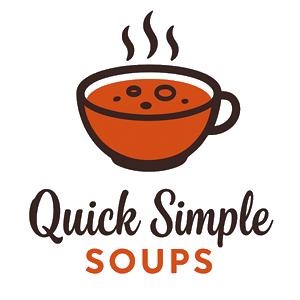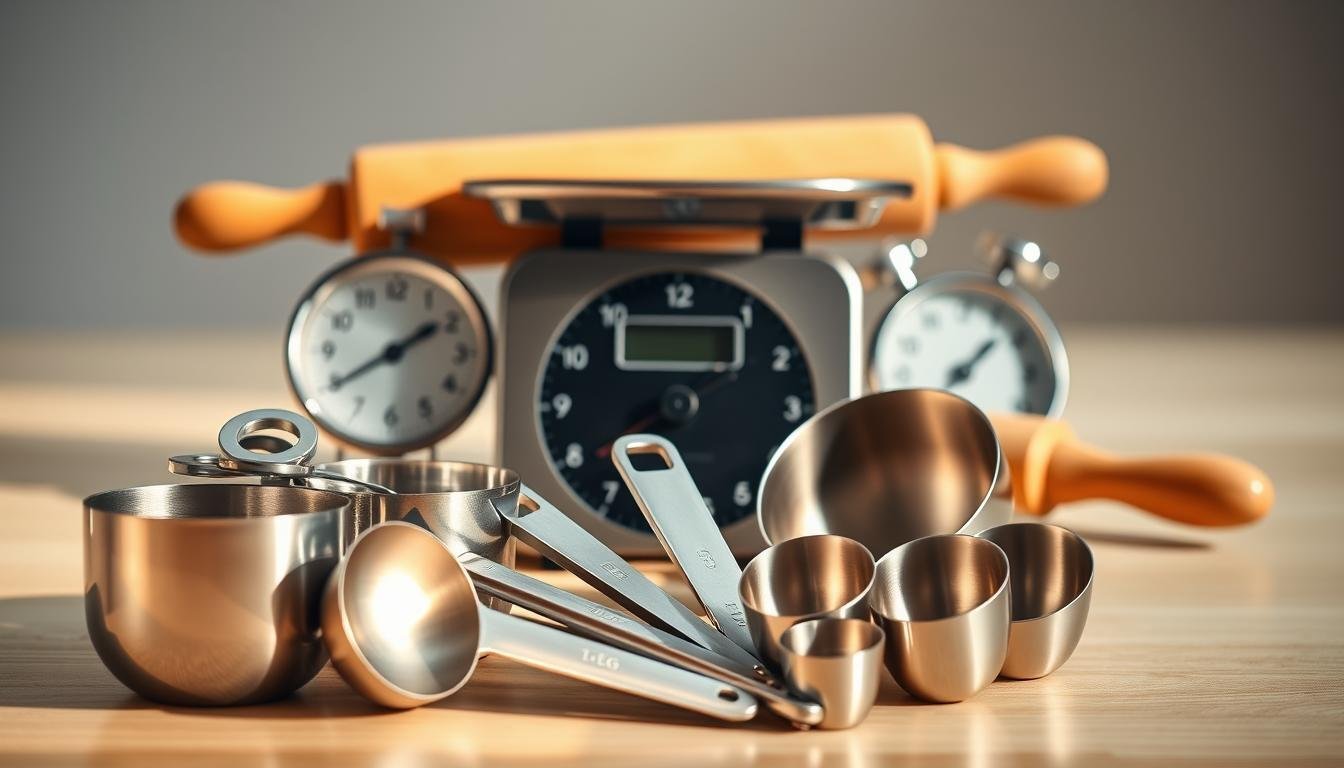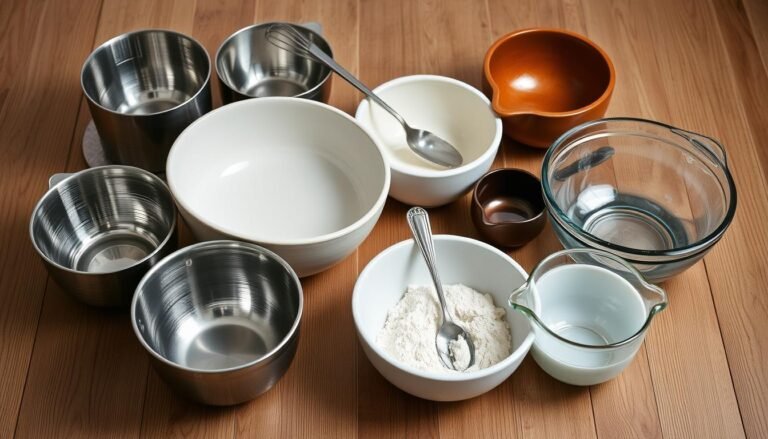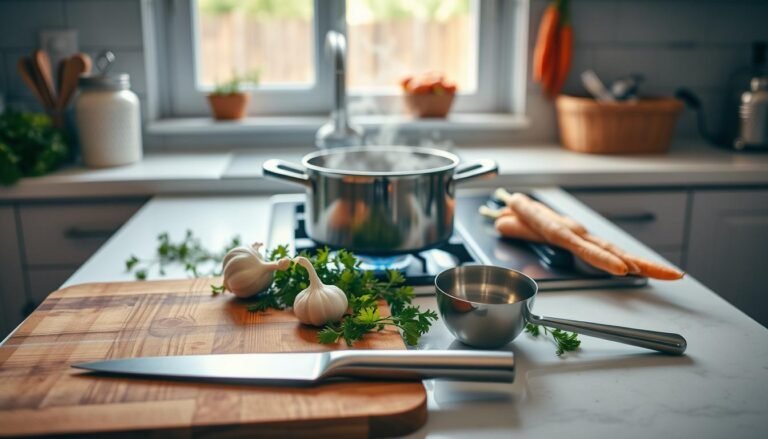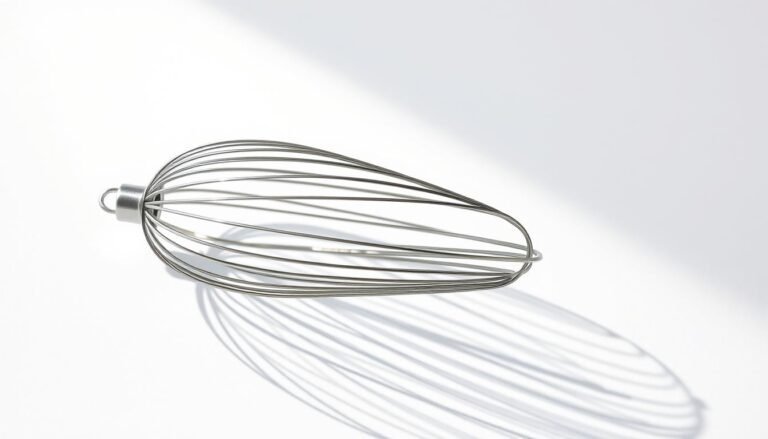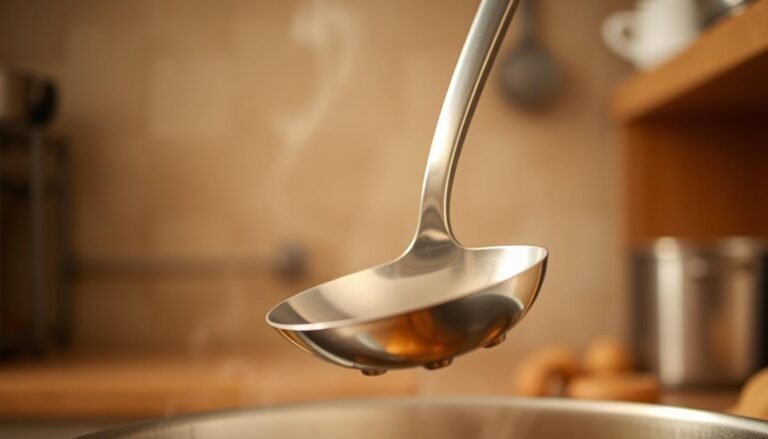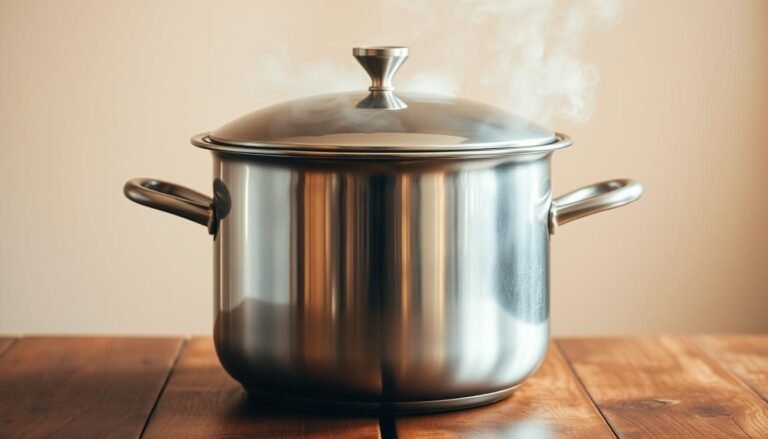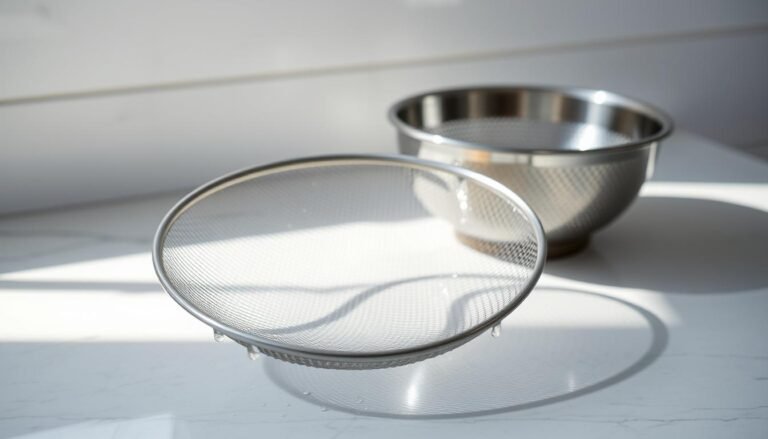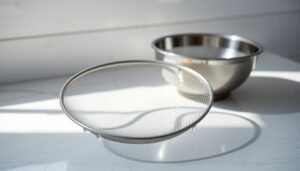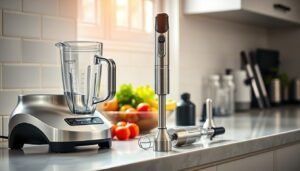Disclosure: This Post Contains Affiliate Links; We earn a commission on purchases.
Getting the right measuring is key for great flavors and textures in cooking and baking. You need the right baking essentials to succeed in the kitchen.
If you’re serious about cooking, Measuring Cups and Spoons are a must. This guide will show you why accurate measuring matters. It will also cover the top kitchen measuring tools.
Key Takeaways
- Understand the importance of accurate measuring in cooking and baking.
- Learn about the different types of Measuring Cups and Spoons available.
- Discover the best materials for measuring cups, such as glass and stainless steel.
- Find out what features to look for in measuring spoons, including accurate measurements and grippy handles.
- Explore the benefits of having a standard set of measuring cups and spoons.
Why Precision Matters in Cooking and Baking
Getting the right measurements is key to cooking and baking success. The difference between a great dish and a not-so-great one often comes down to measurement accuracy.
The Science Behind Recipe Measurements
Recipes are made with specific ingredient ratios. These ratios are needed for the right chemical reactions, textures, and tastes. Precision measuring cups and spoons help keep these ratios right, which is vital for the desired outcome.
How Inaccurate Measurements Affect Your Results
Wrong measurements can mess up flavors, textures, and even the structure of baked goods. Using accurate measurement devices helps prevent these problems. This way, your dishes will likely turn out as you want them to.
Understanding Different Types of Measuring Tools
Measuring tools vary, each for different kitchen tasks. Their accuracy is key for cooking and baking success.
Liquid vs. Dry Measuring Cups
Liquid measuring cups are for fluids, with spouts for easy pouring. Dry measuring cups are for dry ingredients like flour and sugar. For tips on using them, check this guide on measuring tools.
Standard vs. Metric Measurements
Measuring cups and spoons have standard and metric options. Standard is common in the U.S., while metric is used globally. Having both helps with recipes from different places.
Materials and Their Impact on Accuracy
Measuring cups and spoons are made from stainless steel, plastic, and glass. The material impacts accuracy. Stainless steel is durable, while glass is non-reactive and easy to clean. Look for these features when picking measuring tools:
- Durability
- Resistance to corrosion
- Non-reactive materials
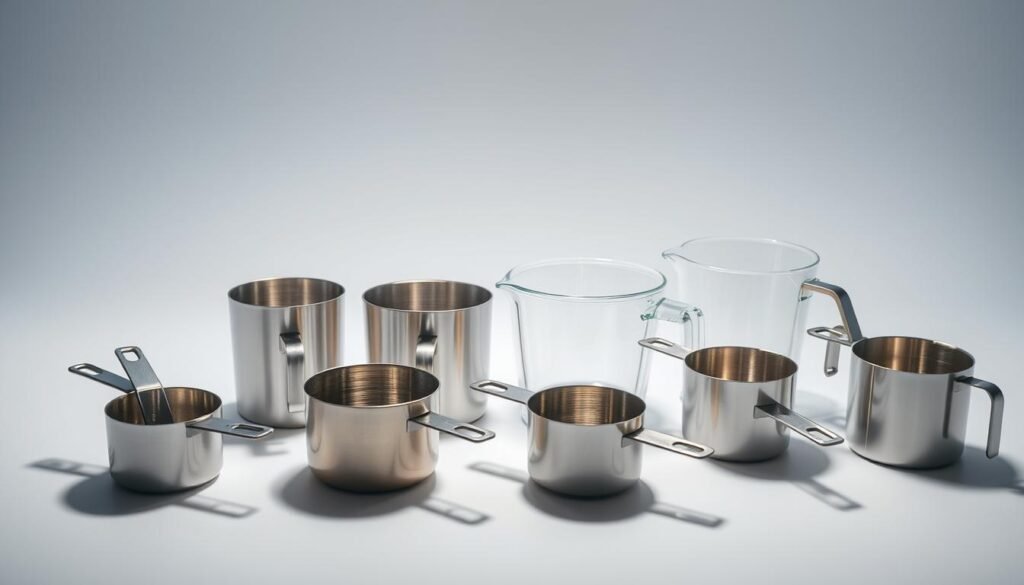
Essential Measuring Cups and Spoons for Every Kitchen
To make great food, you need the right tools. Measuring cups and spoons are key. They help your recipes come out right.
Must-Have Measuring Cup Sizes
A good set of measuring cups has different sizes. You should have 1 cup, 1/2 cup, 1/3 cup, and 1/4 cup. These sizes help with both dry and liquid ingredients.
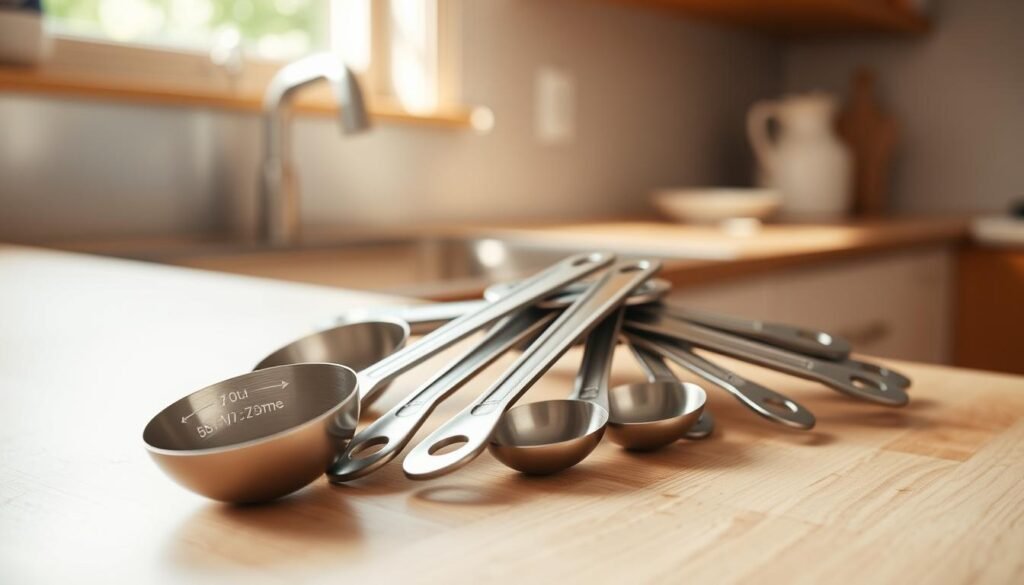
Complete Set of Measuring Spoons
A basic set of measuring spoons includes 1 tablespoon, 1 teaspoon, 1/2 teaspoon, and 1/4 teaspoon. Some sets have 1/8 teaspoon or 3/4 teaspoon for extra accuracy. Good measuring spoons are vital for any chef’s accessories collection.
Specialty Measuring Tools Worth Considering
There are kitchen gadgets for special tasks. They help with sticky ingredients or adjusting for different densities. These specialty tools improve your cooking and make hard recipes easier.
Proper Techniques for Accurate Measurement
Getting good at cooking and baking starts with learning how to measure right. You need the right measuring cups and measuring spoons. But it’s not just about having them; it’s how you use them that matters.
How to Measure Dry Ingredients Correctly
Measuring dry ingredients needs a special way to get it right. Use a dry measuring cup and fill it up too much. Then, level it off with a knife or straight edge.
This way, you get the exact amount needed. It’s key for recipes that need the right mix of ingredients.
Measuring Liquid Ingredients Without Spills
For liquids, use a liquid measuring cup on a flat surface. Pour the liquid until it hits the mark. Make sure to check the level at eye height to avoid mistakes.
This method keeps spills away and makes sure you use the right amount of liquid.
Handling Sticky or Unusual Ingredients
Some ingredients, like honey or molasses, are hard to measure because they’re sticky. To get around this, coat your measuring spoons or cups with oil or cooking spray first. This makes it easy to slide the sticky ingredient out.
Common Measuring Mistakes and How to Avoid Them
To get great results in the kitchen, you must avoid common measuring mistakes. Accurate measuring is key in cooking and baking. Knowing the pitfalls can make you better at it.
Packing vs. Spooning Ingredients
One big mistake is wrong measuring of dry ingredients. Packing ingredients too tight can mean using too much. On the other hand, spooning can mean using too little. The right way is to spoon ingredients into the measuring cup and then level it off with a straight edge or knife.
Eyeballing Measurements
Guessing measurements instead of measuring them right is another mistake. This can mess up the taste and texture of your food. Using accurate measurement devices like measuring cups and spoons helps avoid this. It makes sure your dishes come out right.
Substituting Measuring Tools Incorrectly
Using the wrong measuring tools can also cause problems. For example, using a dry measuring cup for liquids is not good. It’s best to use kitchen measuring tools for what they are made for. This keeps your measurements accurate.
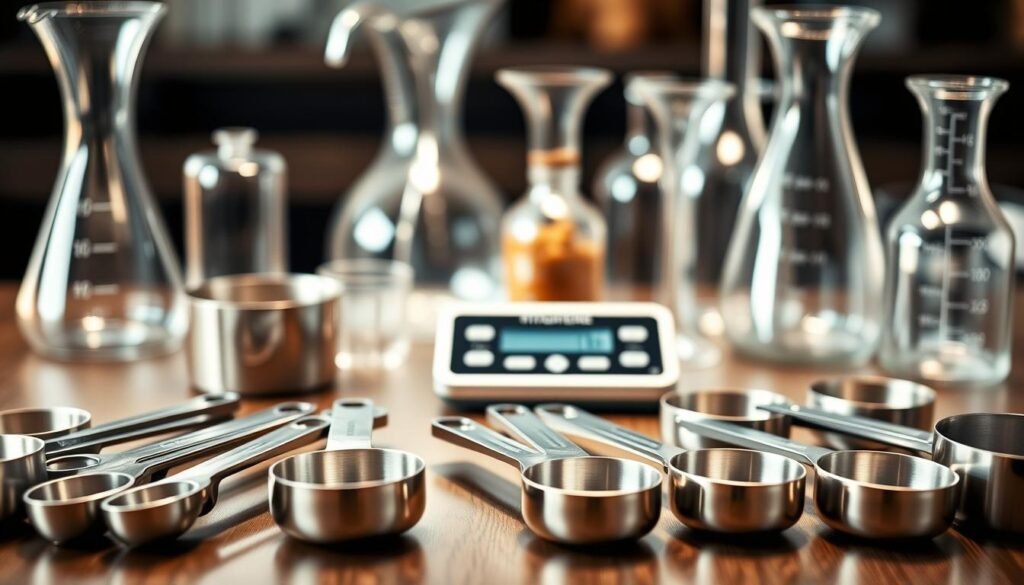
Selecting and Caring for Quality Measuring Cups and Spoons
The right measuring tools are key in cooking. They need to be precise and last long. Choosing them well is important.
Features to Look for in Durable Measuring Tools
Look for clear markings on measuring cups and spoons. They should not fade. Stainless steel and heat-resistant glass are good choices because they last.
Also, find tools with easy-to-grip handles and stable bases. This helps avoid spills.
Top Brands for Precision and Longevity
Some top brands for precision measuring cups and high-quality measuring spoons are:
- OXO
- Cuisinart
- KitchenAid
These brands offer accurate, durable, and easy-to-use tools.
Maintenance Tips to Extend the Life of Your Measuring Tools
Wash your measuring tools gently after each use. Don’t use harsh cleaners or scourers. They can harm the tools.
For stainless steel tools, a little polish now and then can keep them looking good.
By picking the right measuring tools and taking care of them, your kitchen will be ready for cooking and baking.
Conclusion: Elevating Your Cooking Through Precise Measurement
Precise measurement is key to great cooking and baking. This guide shows why good measuring cups and spoons are essential. They help you get consistent results in the kitchen.
Whether you’re a pro chef or a home cook, the right baking essentials and chef accessories matter. They can improve your dish quality a lot.
Knowing about different measuring tools and techniques is important. It helps you avoid common mistakes. This way, you can make your cooking better.
Remember, precision is what makes your recipes shine. With the right tools and skills, you’ll make meals that wow everyone.
Choosing quality measuring cups and spoons is a smart move. It leads to better results, less food waste, and saves time. Making precise measurement a focus will make you a more confident cook.
FAQ
What is the difference between dry and liquid measuring cups?
Why is it important to use accurate measuring tools in cooking and baking?
What are the benefits of using measuring spoons with precise measurements?
How do I choose the right material for my measuring cups and spoons?
What are some common mistakes to avoid when measuring ingredients?
How do I care for my measuring cups and spoons to extend their lifespan?
Are there any specialty measuring tools that I should consider for my kitchen?
Can I use a kitchen scale instead of measuring cups and spoons?

Ryan Conlon is the comfort food fan behind QuickSimpleSoups.com, where he shares easy soup ideas, smart shortcuts, and helpful tips for busy home cooks. Ryan believes a good bowl of soup doesn’t need to be complicated—and he’s here to prove it. Whether you’re looking for quick weeknight meals or cozy classics with a twist, Ryan’s simple approach helps you serve up satisfying soups with minimal effort.
Subscribe to Our Newsletter
